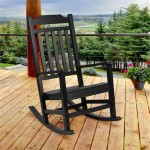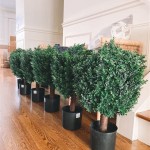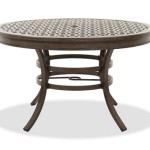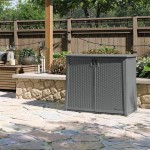Choosing the Right Outdoor Tree for Your Front Porch
Selecting an appropriate outdoor tree for a front porch requires careful consideration of several factors. The tree must be aesthetically pleasing, suitable for container growth if space is limited, and capable of thriving in the specific climate and sun exposure conditions present at the porch location. The wrong choice can lead to a struggling, unsightly plant or, worse, damage to the porch structure itself.
The architectural style of the house should also influence the choice of tree. A formal, symmetrical design might call for a neatly trimmed evergreen, whereas a more relaxed, cottage-style home could benefit from a flowering tree with a less structured form. Ultimately, the goal is to select a tree that complements the house and enhances the curb appeal, creating a welcoming and visually appealing entryway.
Before committing to a specific tree, it is imperative to assess the available space, both horizontally and vertically. Overhead wires, adjacent structures, and underground utilities must be taken into account to prevent future problems. A tree that will eventually outgrow its space can become a maintenance burden and potentially pose a safety hazard.
Key Considerations for Selecting a Front Porch Tree
Several crucial elements must be evaluated before choosing a suitable tree for a front porch environment. These considerations range from the tree's mature size and growth habits to its specific environmental needs and potential impact on the surrounding structure.
Mature Size and Growth Habits: Perhaps the most critical factor is the mature size of the tree. Many trees appear small and manageable when purchased, but they can quickly outgrow their intended space. If the tree is planted directly in the ground, its root system can eventually interfere with the foundation of the house or crack paved surfaces. In a container, the tree's growth will be restricted, but it will still require periodic repotting and pruning to maintain a manageable size and shape. Dwarf varieties are often a better choice for front porch settings, as they offer the aesthetic benefits of a larger tree without the associated space requirements. Consider the tree's growth rate as well; a fast-growing species will require more frequent pruning and maintenance than a slow-growing one.
The growth habit of the tree also plays a significant role. Upright, columnar trees are ideal for narrow spaces, while spreading trees require more room. If the porch has limited overhead clearance, a tree with a weeping or cascading habit might be more appropriate. Pay close attention to the tree's branching pattern as well. A tree with dense, low-hanging branches can block sunlight and create a cluttered appearance, while a tree with an open, airy canopy will allow more light to filter through.
Environmental Needs: Understanding the tree's specific environmental needs is essential for its long-term health and vitality. This includes the amount of sunlight it requires, the type of soil it prefers, and its tolerance to drought or excessive moisture. Before selecting a tree, assess the amount of sunlight the front porch receives throughout the day. South-facing porches typically receive the most sunlight, while north-facing porches are often shaded. Choose a tree that is well-suited to the available light conditions. Soil type is another important consideration. Most trees prefer well-drained soil that is rich in organic matter. However, some trees are more tolerant of poor soil conditions than others. If the soil in the planting area is compacted or nutrient-deficient, it may be necessary to amend it with compost or other organic materials.
Water requirements also vary widely among different tree species. Some trees are drought-tolerant and can withstand long periods without water, while others require regular watering to thrive. Consider the local climate and rainfall patterns when selecting a tree. In areas with frequent rainfall, a tree that is susceptible to root rot might not be a good choice. Conversely, in areas with prolonged dry spells, a drought-tolerant tree is essential.
Potential Impact on the Porch Structure: The potential impact of the tree on the porch structure is another critical consideration. As mentioned earlier, the root system of a tree planted directly in the ground can damage the foundation of the house or crack paved surfaces. Even trees planted in containers can pose a threat if their roots eventually escape and penetrate the surrounding soil. Choose a tree with a non-aggressive root system to minimize the risk of damage. Avoid planting trees too close to the house, as the branches can rub against the siding or roof, causing damage. Falling leaves and debris can also clog gutters and downspouts, leading to water damage. Regular pruning can help to mitigate these issues, but it is important to select a tree that is naturally less prone to shedding.
Suitable Tree Species for Front Porches
Once the key considerations have been addressed, the selection of specific tree species can begin. Certain trees are naturally better suited for front porch environments due to their size, growth habits, and environmental adaptability.
Japanese Maple (Acer palmatum): Japanese Maples are a popular choice for front porches due to their graceful form, vibrant foliage, and relatively slow growth rate. They come in a wide variety of cultivars, ranging in size from dwarf varieties suitable for containers to larger varieties that can be planted directly in the ground. Japanese Maples prefer partial shade and well-drained soil. They are relatively low-maintenance and can be easily pruned to maintain their desired shape.
The vibrant colors of Japanese Maple leaves, from deep reds and purples to bright greens and yellows, add visual interest to any front porch. They are particularly striking in the fall when their foliage transforms into a spectacular display of autumn colors. However, it's important to note that Japanese Maples are relatively slow-growing, so it may take several years for them to reach their mature size. They also require protection from strong winds and harsh sunlight, which can scorch their leaves.
Dwarf Citrus Trees (Citrus spp.): Dwarf citrus trees are another excellent option for front porches, especially in warmer climates. They offer the added benefit of producing fragrant blossoms and edible fruit. Dwarf citrus trees thrive in full sun and well-drained soil. They require regular watering and fertilization to produce abundant fruit. Common dwarf citrus varieties include Meyer Lemon, Key Lime, and Calamondin Orange.
These trees are relatively easy to care for and can be grown successfully in containers. They add a touch of Mediterranean charm to any front porch. However, it's important to protect them from frost during the winter months. In colder climates, they may need to be brought indoors during the winter.
Crape Myrtle (Lagerstroemia indica): Crape Myrtles are known for their showy flowers, attractive bark, and tolerance of hot, dry conditions. They are available in a wide range of sizes, from dwarf varieties suitable for containers to larger varieties that can be planted directly in the ground. Crape Myrtles prefer full sun and well-drained soil. They are relatively low-maintenance and can be easily pruned to maintain their desired shape.
The flowers of Crape Myrtles come in a variety of colors, including pink, red, purple, and white. They bloom throughout the summer and into the fall, providing a long season of color. The attractive bark of Crape Myrtles, which peels and exfoliates to reveal smooth, colorful inner bark, adds visual interest to the landscape even when the trees are not in bloom. However, it's important to choose a variety that is well-suited to the local climate. Some varieties are more cold-hardy than others.
Maintaining the Health and Appearance of Front Porch Trees
Once a suitable tree has been selected and planted, it is essential to provide proper care and maintenance to ensure its long-term health and appearance. This includes regular watering, fertilization, pruning, and pest control.
Watering and Fertilization: Proper watering is crucial for the survival of any tree, especially during the first few years after planting. Water deeply and infrequently, allowing the soil to dry out slightly between waterings. Overwatering can lead to root rot, while underwatering can cause the tree to wilt and die. The frequency of watering will depend on the climate, soil type, and the tree's specific water requirements.
Fertilization is also important, especially for trees grown in containers. Container-grown trees have limited access to nutrients and require regular fertilization to maintain their health and vigor. Use a balanced fertilizer that is specifically formulated for trees. Follow the instructions on the fertilizer label carefully to avoid over-fertilizing, which can damage the tree. The frequency of fertilization will depend on the type of fertilizer used and the tree's specific nutrient requirements.
Pruning: Regular pruning is essential for maintaining the shape and health of front porch trees. Pruning can help to remove dead or diseased branches, improve air circulation, and encourage new growth. The best time to prune trees is during the dormant season, when they are not actively growing. However, minor pruning can be done at any time of year.
When pruning, use sharp, clean tools to make clean cuts. Avoid tearing or crushing the branches, as this can make the tree more susceptible to disease. Prune selectively, removing only the branches that are necessary to maintain the tree's shape and health. Avoid topping trees, as this can damage their structure and make them more prone to disease.
Pest and Disease Control: Front porch trees can be susceptible to a variety of pests and diseases. Regularly inspect the tree for signs of infestation or disease. Common pests include aphids, scale, and spider mites. Common diseases include powdery mildew, leaf spot, and root rot.
If you detect any signs of pests or disease, take action immediately to prevent the problem from spreading. There are a variety of organic and chemical control methods available. Choose the method that is best suited to the specific pest or disease and the tree's specific needs. Always follow the instructions on the product label carefully.

Unbranded 2 Pack 35 Inch Artificial Cedar Topiary Trees For Outdoor Front Porch Decor Zhui90cmsbs

2 Pack 35 Inch Artificial Cedar Topiary Trees For Outdoor Front Porch Decor

Ly Natural 5 5ft Cypress Cone Topiary Artificial Tree Uv Resistant Indoor Outdoor

How To Make A Front Porch Christmas Tree Hgtv

3 Ft Artificial Cedar Topiary Trees For Outdoor Front Porch Decor 2 Pack Yybq599 The Home

Free Shipping Fraser Hill Farm Porch Tree In Reindeer Pot With 150 Warm White Led Lights 4 5 Walmart Com

Amazing Diy Christmas Greenery Tree Idea Budget Porch Decor

6 Mini Cedar Pine Tree Indoor Outdoor

Fraser Hill Farm 4 5 Ft Porch Tree In Black Pot With Clear Lights Festive Christmas Holiday Decor Indoor Outdoor Decorations Ffpth054 1gr

Decorating With Potted Trees Balsam Hill Blog








